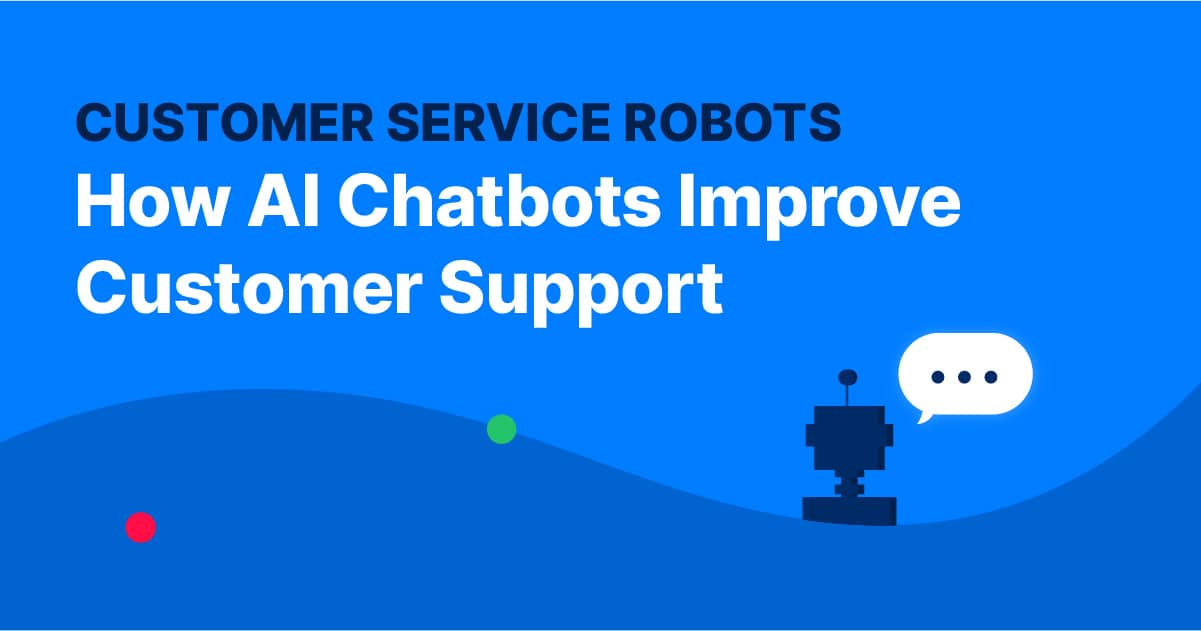Recently, customer service robots have become increasingly popular as businesses seek to improve their customer support services. AI chatbots, in particular, have emerged as a popular form of customer service robot due to their ability to communicate with customers effectively and efficiently.
In this article, we will explore what a customer service robot is, its impact on customer support, whether or not it will replace human customer service representatives, and the benefits of AI chatbots in customer service.
Let’s get started!
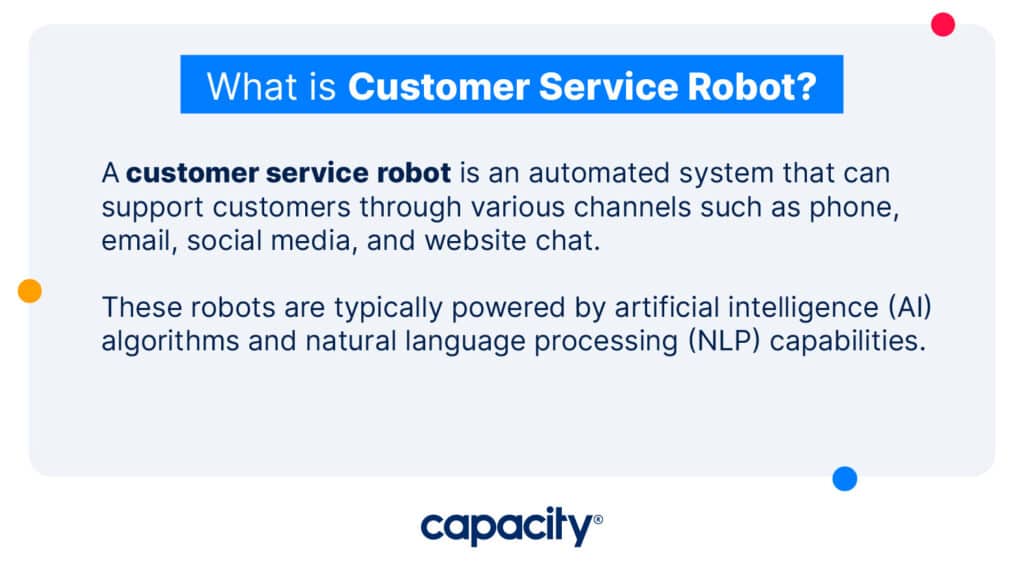
What is a Customer Service Robot?
A customer service robot is an automated system that can support customers through various channels such as phone, email, social media, and website chat. These robots are typically powered by artificial intelligence (AI) algorithms that can analyze customer queries and provide relevant responses based on pre-programmed rules and natural language processing (NLP) capabilities. Some customer service robots also have machine learning capabilities to learn from past customer interactions and improve their responses over time.
The Impact of Customer Service Robots
The impact of customer service robots has been significant, particularly in improving customer support services. Let’s take a deeper look at how these AI bots affect customer support teams:
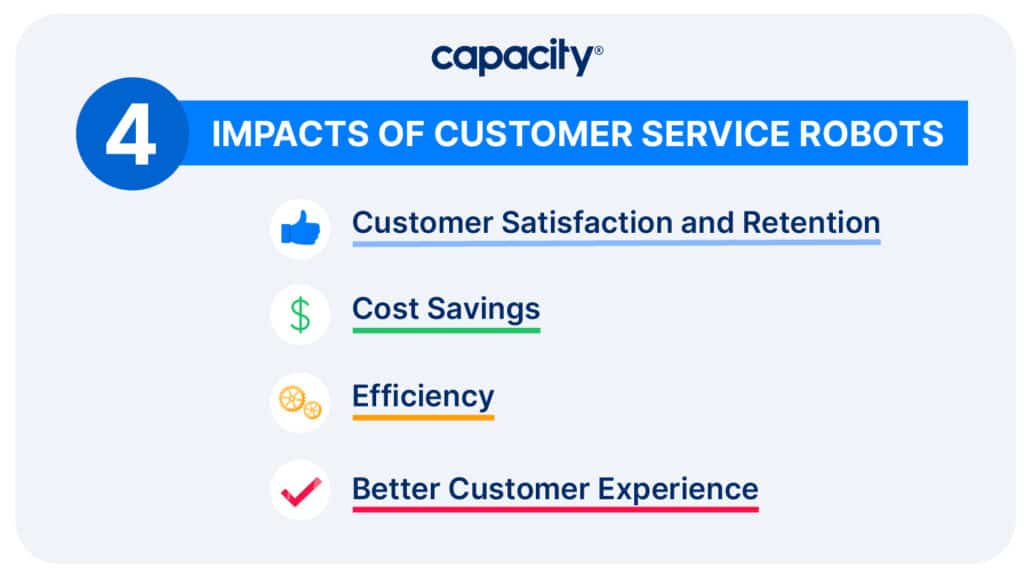
Customer Satisfaction and Retention
One of the most significant impacts of customer service robots is customer satisfaction and retention. Customers appreciate receiving prompt responses to their queries, which helps to build trust and confidence in the business.
When customers receive quick and accurate answers to their questions, they are more likely to be satisfied with the service and continue doing business with the company. Moreover, customer service robots can handle a large volume of queries simultaneously, which helps to reduce wait times for customers and increase the efficiency of customer support teams.
Cost Savings
Customer service robots are also a cost-effective solution for providing customer support services. They can handle many queries at a fraction of hiring additional human support staff.
By automating routine and repetitive tasks, customer service robots free up human support staff to focus on more complex queries and issues.
Efficiency
Another significant impact of customer service robots is their ability to work 24/7. They do not need to take breaks or vacations and are unaffected by time zone differences. This means customers can get support at any time of the day or night, regardless of their location. These AI chatbots are particularly useful for businesses with customers in different parts of the world.
Better Customer Experience
Customer service robots can be used to collect customer feedback and insights. By analyzing customer queries, these robots can identify common issues and give businesses valuable insights into customer needs and preferences. This can help companies to improve their products and services and provide a better overall customer experience.
Despite the many benefits of customer service robots, there are still concerns that they will replace human support staff. However, this is not the case. Customer service robots and human support staff can work together to provide the best customer support experience.
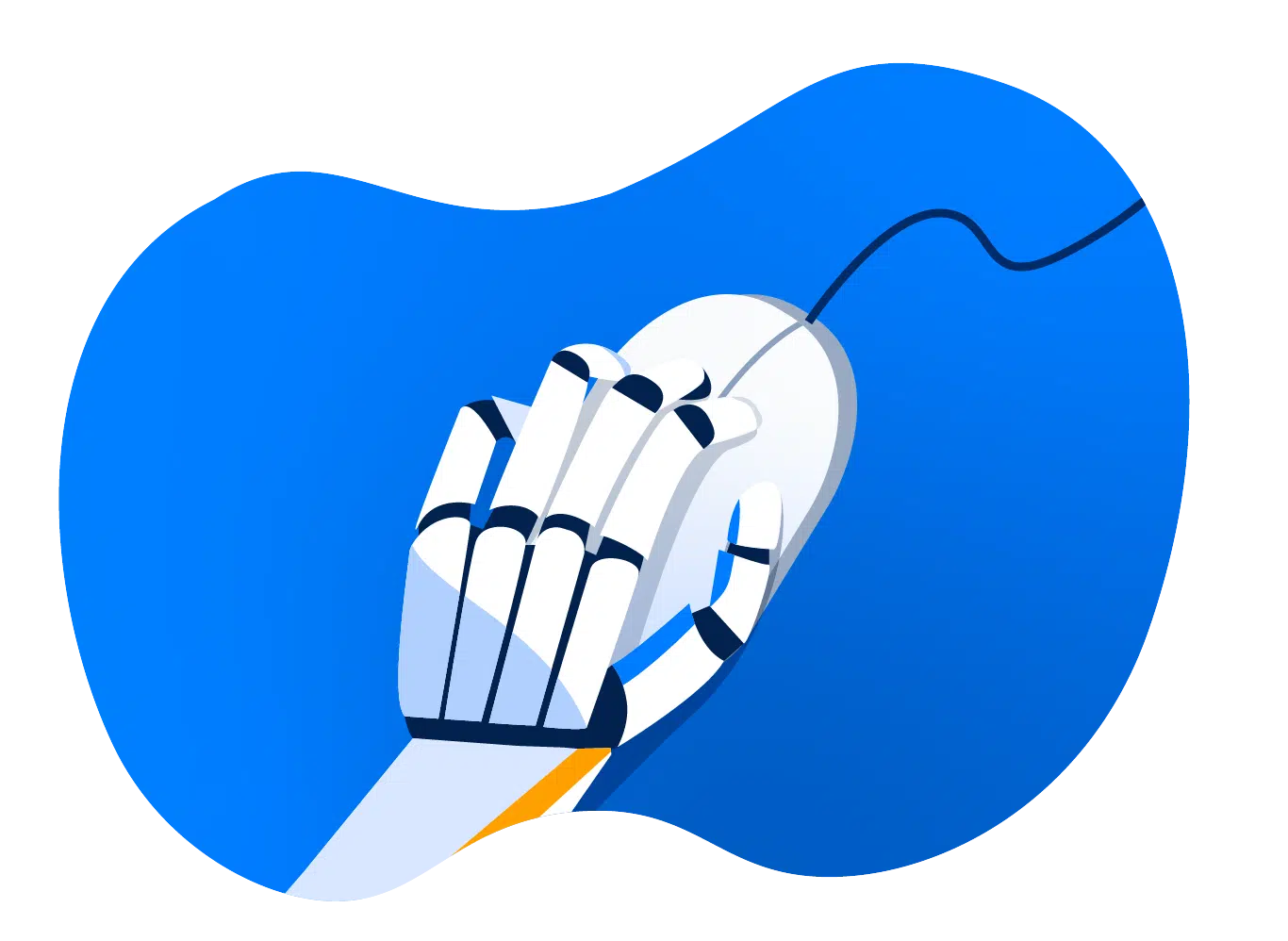
Automate Your Work
Capacity’s enterprise AI chatbot can help:
- Answer FAQs anytime, anywhere
- Find relevant documents within seconds
- Give surveys and collect feedback
Will Robots Replace Customer Service?
One of the concerns about customer service robots is that they will replace human customer service representatives.
However, the answer is no.
While customer service robots can handle many simple queries, they cannot handle complex queries that require empathy, creativity, and emotional intelligence. Human customer service representatives are still needed to handle difficult questions and provide personalized customer support. Moreover, human customer service representatives can also give the human touch essential for building strong customer relationships.
AI platforms like Capacity use NLP technology to provide personalized support from AI chatbots. While these bots cannot answer extremely complicated use cases, they can still respond in human-like language, similar to a human agent.
Instead of replacing human customer service representatives, AI chatbots can work alongside them to support customers. This approach enables businesses to respond immediately to simple queries while ensuring that human representatives handle complex questions.
Benefits of AI Chatbots in Customer Service
AI chatbots have become popular for businesses looking to improve customer support services. There are many benefits of using AI chatbots in customer service, including:
- 24/7 Availability: AI chatbots can work 24/7, providing customer support regardless of the time of day or night. This is particularly useful for businesses with customers located in different time zones.
- Cost-Effective: AI chatbots are a cost-effective solution for providing customer support services. They can simultaneously handle a large volume of queries at a fraction of the cost of hiring additional human support staff.
- Scalability: AI chatbots can handle many questions simultaneously, making them highly scalable. This means they can quickly adapt to increased queries without additional resources.
- Consistent Responses: AI chatbots provide consistent responses to customer queries, ensuring that customers receive accurate and reliable information every time.
- Personalization: AI chatbots can be programmed to offer personalized answers based on customer data, such as their purchase history and preferences.
- Data Collection and Analysis: AI chatbots can collect and analyze customer data, giving businesses valuable insights into customer needs and preferences.
- Improved Efficiency: AI chatbots can handle routine and repetitive tasks, freeing up human support staff to focus on more complex queries and issues. This helps to improve the efficiency of customer support teams.
- Improved Customer Experience: By providing immediate responses, personalized support, and valuable insights, AI chatbots help to improve the overall customer experience.
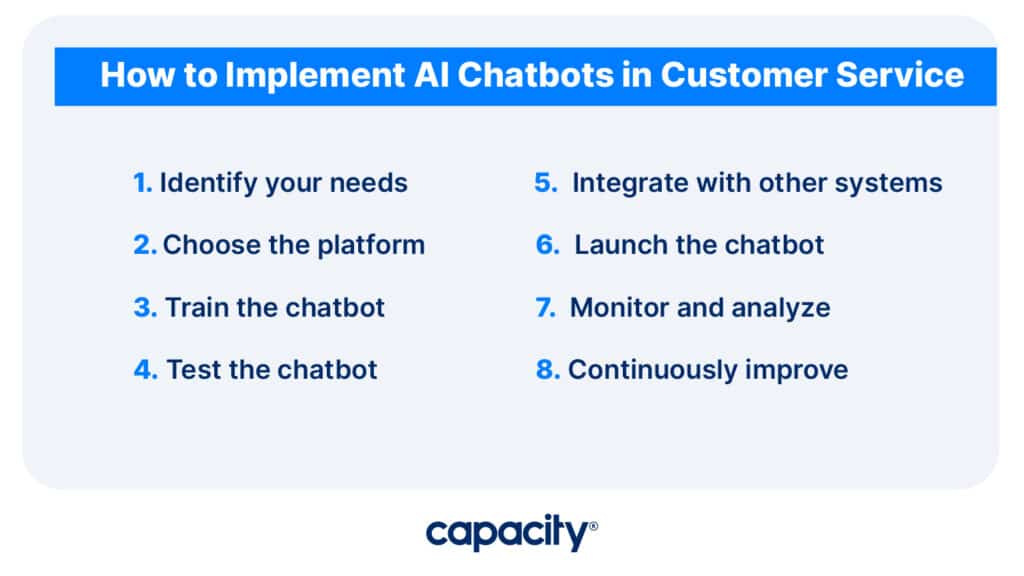
How to Implement AI Chatbots in Customer Service?
Implementing AI chatbots in customer service can be a complex process. Still, it is worth the effort as it can significantly improve the efficiency and effectiveness of your customer support services.
Here are some key steps that businesses can take to implement AI chatbots in their customer service:
Step 1. Identify your customer service needs:
Before implementing AI chatbots, businesses need to identify their customer service needs. This includes understanding the types of queries that customers have, the volume of queries, and the response times required to ensure customer satisfaction.
Step 2. Choose the right AI chatbot platform:
Many AI chatbot platforms are available in the market, and businesses must choose the one that best meets their needs. Some factors to consider include the level of customization and integration with other systems, ease of use, and cost.
Recommended AI ChatBot Platform: Capacity
Capacity uses NLP and machine learning (ML) to understand customer queries and provide accurate responses. Capacity offers a high level of customization and integration with other systems, making it an ideal choice for businesses looking to implement AI chatbots in their customer service.

Automate Your Work
Capacity’s enterprise AI chatbot can help:
- Answer FAQs anytime, anywhere
- Find relevant documents within seconds
- Give surveys and collect feedback
Step 3. Train the chatbot:
Once the AI chatbot platform is chosen, it must be trained to understand customer queries and respond appropriately. This involves creating a knowledge base of frequently asked questions, common issues, and appropriate responses.
Step 4. Test the chatbot:
Once the chatbot is trained, it must be tested to respond to customer queries accurately. This involves conducting a series of tests to identify any errors and refine the chatbot’s responses.
Step 5. Integrate the chatbot with other systems:
The chatbot must be integrated with other customer services systems, such as CRM and ticketing systems, to ensure customer queries are correctly tracked and resolved.
Step 6. Launch the chatbot:
Now the bot is ready to be launched! Businesses should promote the chatbot to their customers through various channels, such as their website, social media, and email.
Step 7. Monitor and analyze chatbot performance:
After launching the chatbot, businesses need to monitor and analyze its performance. This includes tracking the volume of queries, response times, customer satisfaction levels, and errors or issues.
Step 8. Continuously improve the chatbot:
Finally, businesses must continuously improve the chatbot by analyzing customer feedback, updating the knowledge base, and refining the chatbot’s responses. This helps to ensure that the chatbot remains effective and provides the best possible customer experience.
Why is Capacity the Best AI Chatbot Platform?
Capacity is the best AI chatbot platform for several reasons. Firstly, it offers many features allowing businesses to automate customer support and other business processes.
With Capacity, businesses can answer more than 90% of their frequently asked questions (FAQs) with an all-in-one helpdesk, reducing the number of tickets in their support team’s queue.
Additionally, Capacity allows businesses to automate tedious processes and tasks with low-code workflows, increasing productivity in cross-functional teams.
Capacity’s conversational AI interface is intuitive and easy to use, allowing businesses to quickly deploy and manage their chatbots. The platform offers a flexible database that can be deployed anywhere, making integrating with other systems and technologies easy.
Want to see Capacity in action? Create an account and get started for free!











































